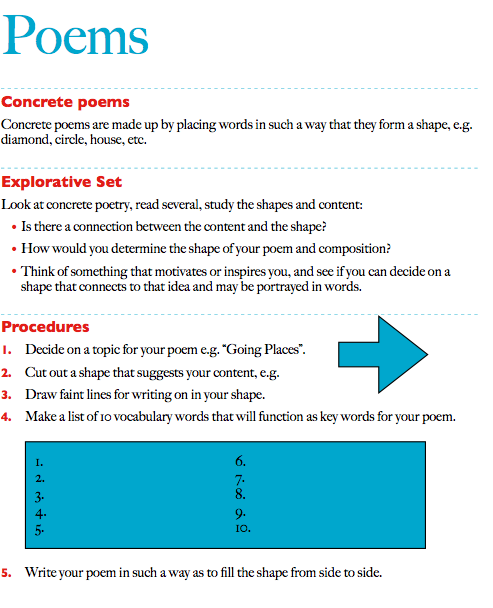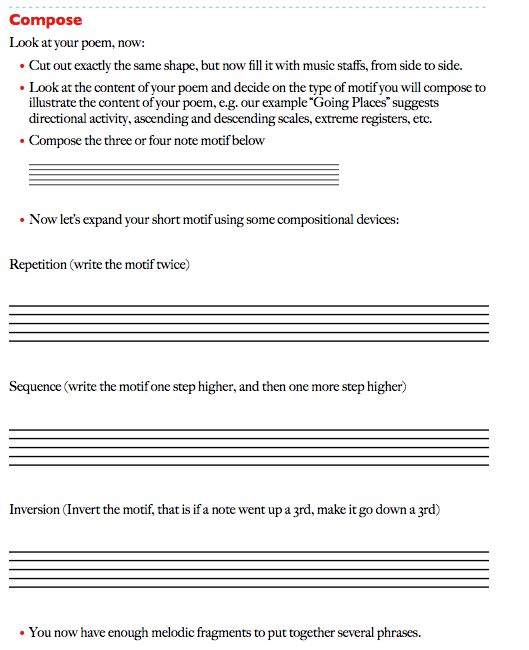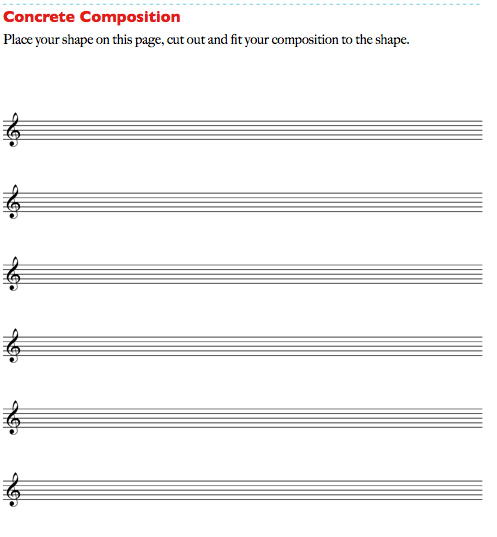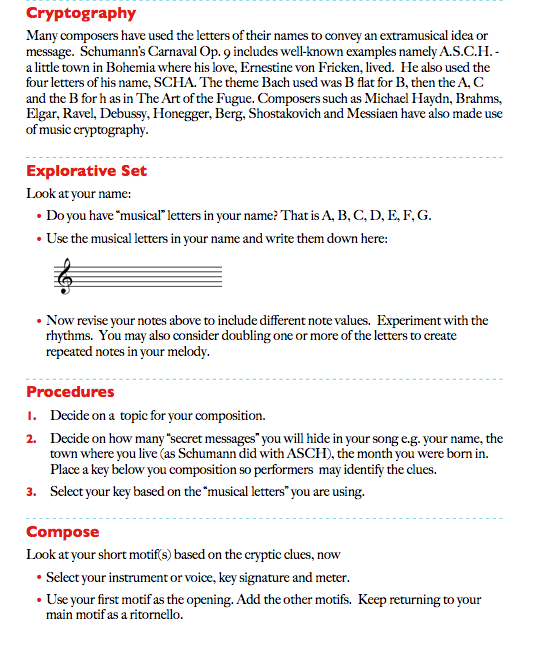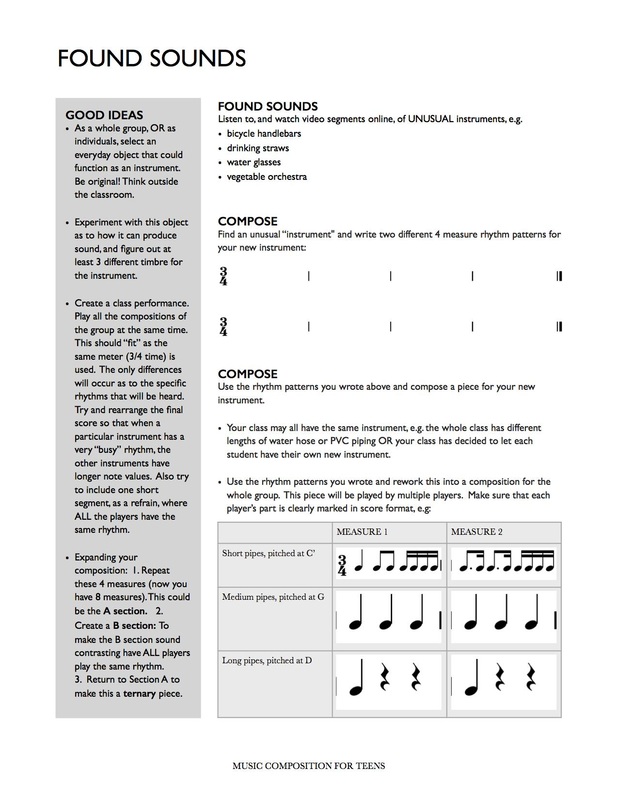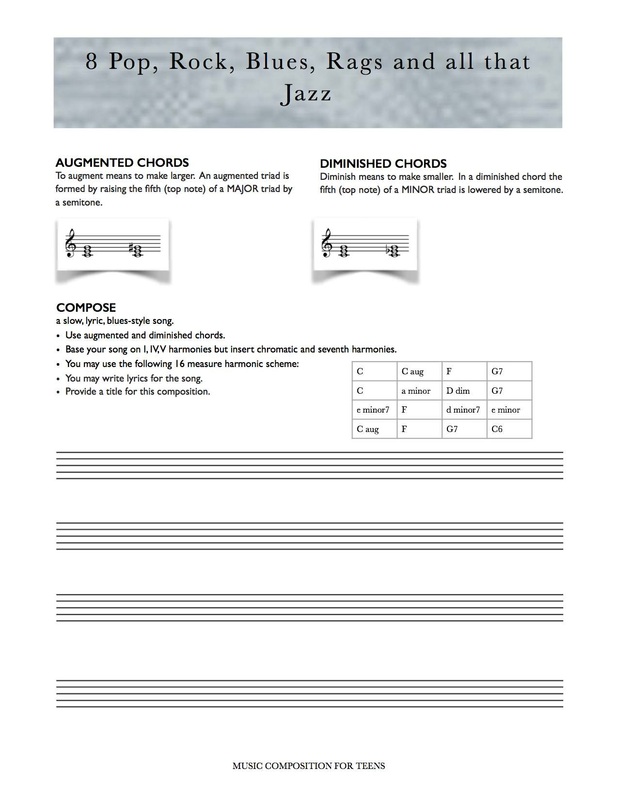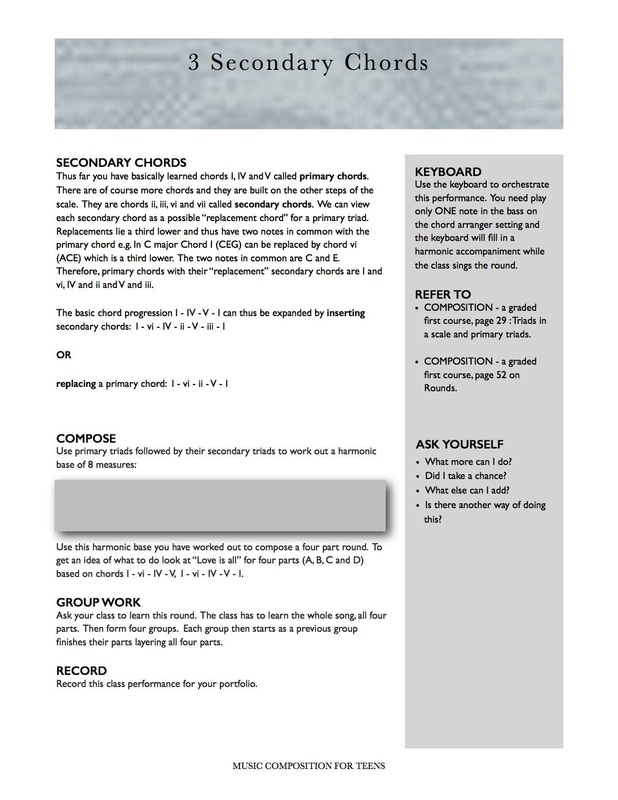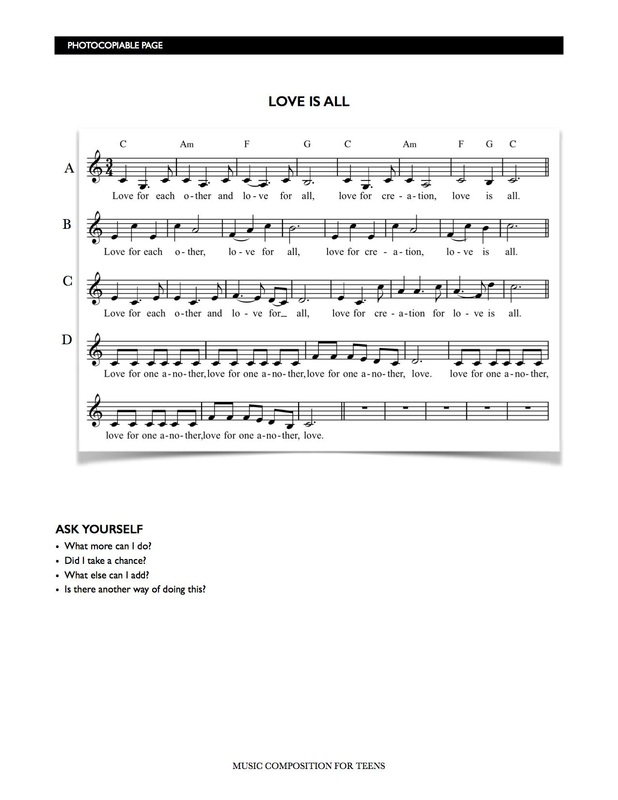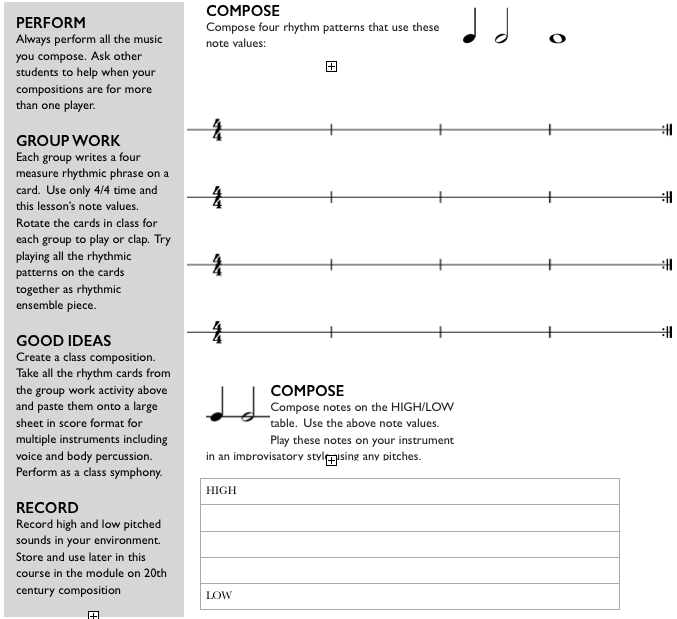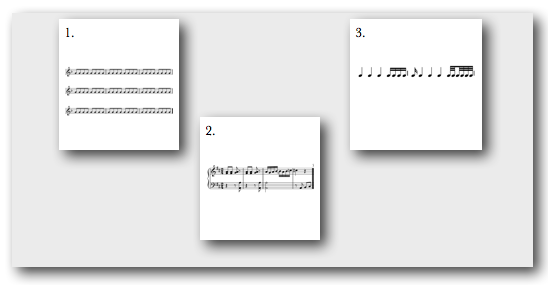Check the blog on this site for further lesson ideas.
Sample lessons from my publications:
Concrete Poems Composition from "Music Tells my Story"
Cryptography Composition from "Music Tells my Story"
Found Sounds Composition from "Music Composition for Teens - 2nd course"
Blues Song from "Music Composition for Teens - a second course"
Vocal Round from "Music Composition - a second course"
PITCH COMPOSITION from Music Composition for Teens 1
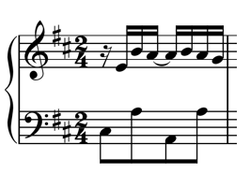
SHOO-BI-DOO RAG from Music Composition for Teens 1
COMPOSE
Compose a rag for piano solo.
- Use the provided intro.
- First plan a harmonic base, use mainly I - IV - V - I.
- Design the rag in AABA form (ternary form). Your final formal structure will be Intro (m.1-4), AA (m.5-12), B (m. 13-20), A (m.5-12).
PERFORM
Practice and perform your rag for a practical assessment. If you are not a pianist, you may opt to have a friend or the teacher perform your piece, or if you play a treble non-transposing instrument, you may consider the treble part your instrumental part and the pianist can accompany you with the bass (left hand) part only. If you play a transposing treble instrument (e.g. clarinet, trumpet, etc). transpose the treble part so you may play along with an accompaniment.
ASK YOURSELF
- What more can I do? e.g. Can I orchestrate it? Can I expand it?
- Did I take a chance? e.g. Did I imagine different textures? Different timbre?
- What else can I add? e.g. Can I add performance directions such as dynamics, articulation, tempo markings, etc? Could I perform this? Could this become a class composition?
- Is there another way of doing this? e.g. Could I compose a piece of ragtime music taking another approach?
ALEATORIC MUSIC COMPOSITION LESSON
from Music Composition for Teens 1
DID YOU KNOW?
Aleatoric music is Chance Music. It is music composed by the random selection of rhythms, pitches, and/or tone colors. It was developed in the 1950s by John Cage and others.
COMPOSE
GOOD IDEAS
ASK YOURSELF
from Music Composition for Teens 1
DID YOU KNOW?
Aleatoric music is Chance Music. It is music composed by the random selection of rhythms, pitches, and/or tone colors. It was developed in the 1950s by John Cage and others.
COMPOSE
- Form 5 groups. Each group plots a composition of their choice on one large sheet of paper. Number each sheet 1, 2, 3, etc.
- Plot five melodic and rhythmic segments per each sheet of paper as per the image above.
- Place the 5 sheets of paper up on the wall so performers have to walk over to the numbered sheet to play.
- To perform: The composer or teacher can select the order of the groups to play. Also select the order of the various segments on a page. The performer selects mood, dynamics and tempo during the performance. The performer also selects the number of repetitions he/she will make per segment.
- Selections may be made in any random number of ways e.g. roll of dice, drawing numbers out a hat, etc.
- Record! Aleatoric music is never the same as there are so many variables. Get ready for the performance, record, and store this class performance to your portfolio.
GOOD IDEAS
- This composition works well as a class project. It could be for a soloist where the soloist randomly selects the order of the segments to perform and as he/she performs selects mood, tempo, articulation, etc.
- Also, groups or pairs of students could be assigned to 1,2,3,4,5. Randomly select the order per group e.g. Group 1 might have to play in the order 2, 4, 5, 1, 3 and Group 2 might have to play in the order 1, 5, 2, 3, 4. It could so happen that two groups end up at the same sheet playing simultaneously. This is part of the Aleatoric experience!
ASK YOURSELF
- What more can I do?
- Did I take a chance?
- What else can I add?
- Is there another way of doing this?

MY STORY IN MELODY (LEITMOTIF) from Music Tells my Story
Leitmotif (or leading motive) is a short melody associated with a particular character, event or emotion particularly in the operas of Wagner. Leitmotifs serve dramatic and musical functions. They can sound to emphasize what is already being seen on stage or on the screen, or they can suggest to the listener/viewer something unseen that is being thought of.
Explorative Set
1. Listen to sound clips and view movie clips of for example Jaws and Darth Vader from Star Wars.
2. Discuss:
• What do you notice about the Leitmotif associated with Jaws?
• How does it inform the viewer?
• How long is the leitmotif? How many notes are used to create this effect?
• Is it a successful leitmotif? Why?
• What do you notice about the Leitmotif associated with Darth Vader?
• How does it inform the viewer?
3. Analyze the Jaws Leitmotif below:
This is a two-note motif used very effectively. To lengthen the motif into a melodic phrase the composer uses repetition (repeating this segment) and also diminution (halving the note values so they appear in quicker succession).
4. Now analyze the Darth Vader theme and see if you can identify a three or four note key motif, and identify the devices (such as repetition, sequence, echo, imitation, inversion) the composer uses to expand a simple motif into a longer melody.
Compose
• Think of your favorite movie, video game or comic character, OR make one up.
• Think of this character’s attributes: Is he scary? Commanding? Forceful?
• Compose a three-note motif as leitmotif for your character.
• Now extend your leitmotif into a longer melodic phrase by using repetition and EITHER augmentation (double the note values) OR diminution (half all the note values).
• Complete this short composition project by revising and editing your leitmotif into a short performance. Select your player(s), orchestrate this melody, add rhythm and/or percussion if needed, and perform.
• Record the performance in segments: 2 second, 5 second, 10 second and full length versions.
• Now that you have recording(s) of this leitmotif, finish your project by making a multimedia presentation.
Multimedia Project
Use your character whom you created a leitmotif for, and produce an audio/visual
• slide show
• video
• digital storytelling project
• skit
• dramatization
• narrated story with soundtrack
Good Ideas
Class project:
• Combine various characters and their leitmotifs from this class and write a short story or play featuring the selected characters.
• Stage a short production of this story where students can act out the characters, or use digital images with a soundtrack. Make sure to plan carefully how and where your leitmotifs will be heard.
• Keep in mind that leitmotifs may also be transformed to sound threatening, happy, serious, sad, etc.
